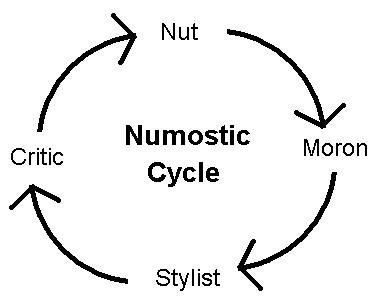Last night we went to see the wonderful Swedish independent film “Let the Right One In”. I don’t know how to talk about this film properly to anyone who has not yet seen it, so….
(1) If you haven’t seen this film, please stop reading right now, go out immediately and watch it, and then feel free to proceed on to the rest of this post.
(2) If you have already seen the film, by all means keep reading.
***
OK, I assume that if you’ve gotten this far you’ve seen the film, and that I won’t be spoiling it for you.
What struck me about this film is that it has the form of one tale and the content of a completely different one. On the surface it’s a tender coming-of-age romance, the story of a tentative adolescent relationship growing, like a delicate rose-petal, in the midst of a vampire movie. The sort of sweet and delicate romance between twelve year olds that we’ve seen before in “My Life as a Dog”, “A Little Romance” and similar films.
But if you really think about what you’ve seen, it’s not that at all. In fact it’s nothing like that. What’s actually going on is that an inhuman monster – powerful, ancient and bloodthirsty – is in need of a new human slave, its previous slave having reached the end of his useful lifespan. This monster sets about seducing a confused young boy, playing on the boy’s loneliness, nascent sexuality and innocent need for connection, into becoming its next slave. He should be good for another fifty years or so – then the monster will get another one.
This is not a new concept in vampire stories. “The Hunger” showed a similar master/slave dynamic between the two vampires, and of course this was also the defining relationship between Dracula and Renfield.
What’s intriguing about “Let the Right One In” is that this is all shown entirely from the point of view of the innocent twelve year old boy who is being drawn in by the monster to a life of slavery. We the audience find ourselves idealizing the monster just as he does – we are taken through the boy’s process of falling in love – even when (as it must) the monster reveals its true horrifying nature.
Objectively we are given all of the information we need to understand what is really happening here. We are shown, in painful detail, the tragic fate of the monster’s previous servant, and we are shown the monster’s complete lack of compunction about killing one innocent victim after another.
And yet at the end, when the boy has walked away from everyone he loves to enter into a lifetime of servitude to a ruthless and bloodthirsty vampire, the audience feels as though it has reached the happy ending of a romance. This in spite of the fact that the penultimate scene contains the single most bloodthirsty depiction of horror and atrocity against children that many of us will ever see on-screen. The film is so effective in controlling our point of view that by the time it sees these children brutally murdered, the audience is actually rooting for their death.
The film plays various tricks to keep us inside the boy’s head. For example, all of the adults around him are portrayed as ridiculous and/or self-absorbed fools. There is not a single adult he can turn to help counter the illusory reality that the monster is weaving around him.
And of course the title of the film is a brilliant reversal. Because this is a vampire film, we assume that the title is referring to the need to invite in only the right vampire – since a vampire cannot enter your home without being invited. But in fact it’s the other way around – the vampire has clearly been searching a long time for the right servant to replace the one it is about to discard. In the end, we see that it is the boy – merely the latest in a series of human servants the vampire will keep around for as long as they are useful – who is being let in.
It’s amazing what you can do when you know how to play around with genre expectations.
